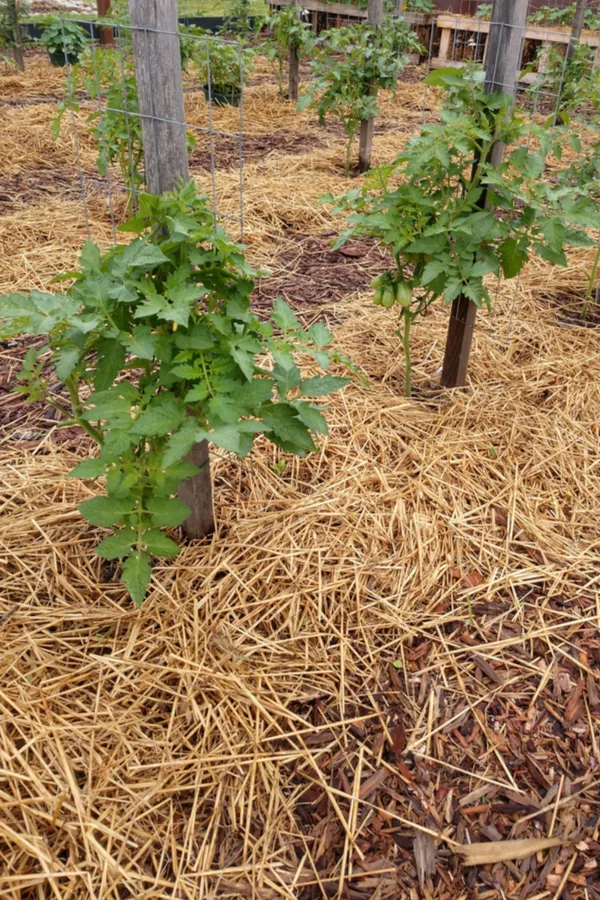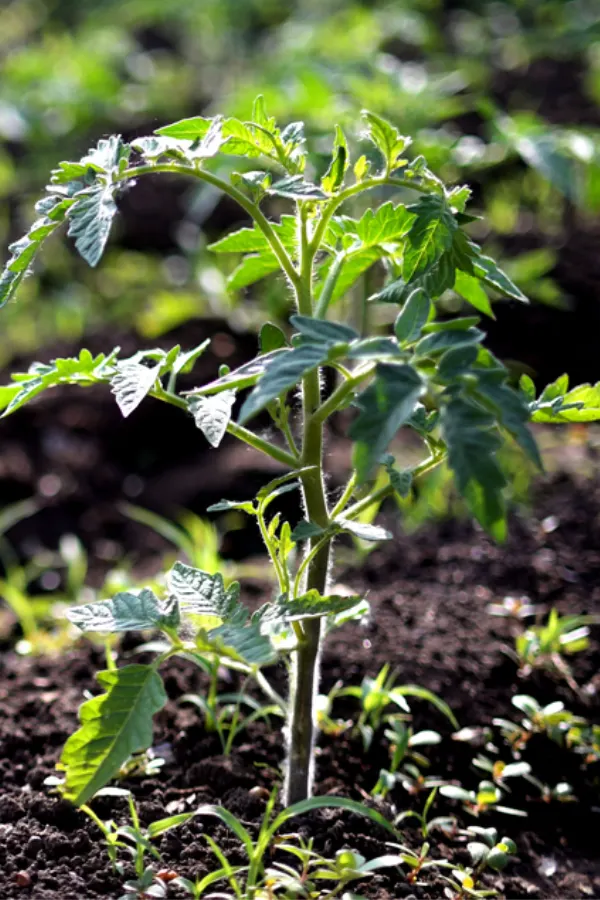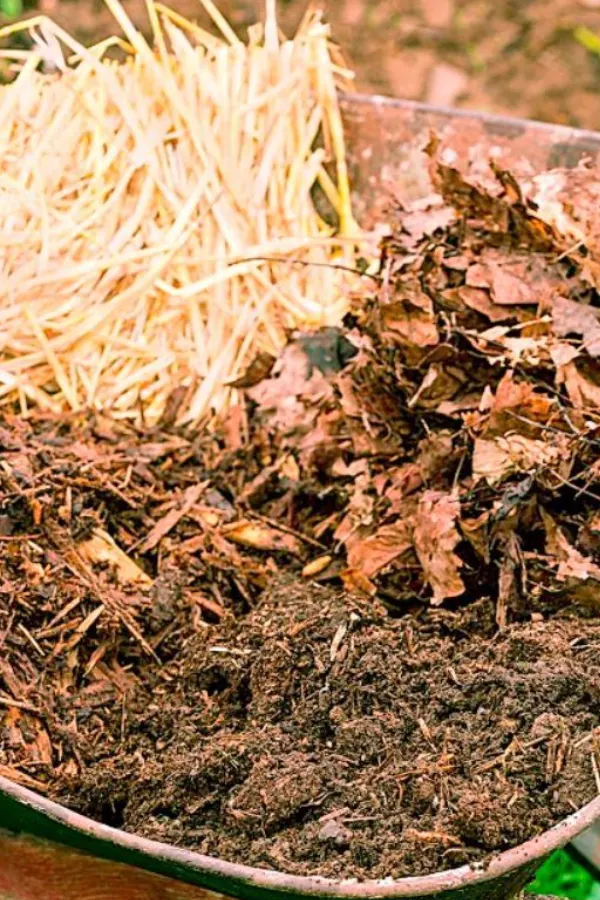One of the best secrets of all for growing healthy, strong, and amazingly productive tomato plants is to use a thick layer of mulch around your plants. And not just any mulch – but one that provides both protection and power to your tomatoes!
Mulch provides a long list of benefits to nearly every vegetable plant under the sun. Not only can it help to control weeds, but it also helps retain moisture and regulate soil temperature. All of which happen to be critical to plant health and growth.
But when it comes to tomato plants, covering your soil can provide all of that and a whole lot more! In fact, when applied correctly, it will not only protect plants and the soil, but energize them as well. With that in mind, here is a look at how to mulch your plants for big success this year – including a little secret step to set the stage for your best tomato crop ever!

Why To Mulch Tomato Plants
Leaving your soil bare and exposed can create a long list of issues for any vegetable plant, but that is especially true for tomato plants.
For starters, tomato plants like warm soil to grow strong, sturdy roots, stems and foliage – and mulch can certainly help provide that. A thick layer of mulch insulates the soil from wild temperature swings. In the early spring, it keeps the soil warm on chilly days and cool nights. And in the summer, it helps keep the soil from becoming too warm from the hot, blistering sun.
Just as it does with soil temperature, a layer of mulch also helps to conserve moisture in the soil. If left bare, soil can dry out quickly from the hot sun or from blowing winds. When it does, it can wilt plants quickly, taking a toll on their health.
The Benefits Keep Coming – How & Why To Mulch Tomato Plants
But perhaps best of all, mulch protects your plants from being overrun by weeds. Bare soil is an open invitation for weed seeds to find a home and take hold. And when they do, they spell a whole host of problems for your tomato plants.

Weeds are more than just unsightly in the garden. As they grow, they steal valuable resources from the soil, which are needed by nutrient-hungry tomato plants. And those same weeds can also be a safe haven and home for the pests that love to attack your tomato plants.
If all of that wasn’t enough, mulch also helps protect your plants from disease. Most notably, soil borne diseases such as tomato blight which can wipe out an entire crop.
Tomato blight is caused from spores in the soil. Left bare, a simple rain or watering can splash those spores right up onto the leaves of the plant, infecting it in the process. (See: How To Prevent Tomato Blight – 3 Simple Tricks To Help Keep Plants Safe)
Mulching Tomato Plants – What To Use
Now that we know why mulch is so important, let’s cover how to mulch your plants for success. And when it comes to “The How To”, it all starts with using the right type of mulch. And, as you will see below, adding a bit of power to that mulch for your tomato plants as well!
The best types of mulch to use on your tomato plants are organic and natural mulches. Straw, shredded leaves and grass clippings all fall into this category and are the best options for tomato plants.
Not only will they protect the plants, retain moisture and repel weeds – they also break down over time to add nutrients to the soil and your tomatoes. In the case of green grass clippings, they can even give a boost of nitrogen as well. (Just be sure to use untreated grass clippings!)
Listen below to our podcast on How To Grow Great Tomatoes!
As for mulches to avoid, wood chips, pine bark, hardwood bark and sawdust should be avoided. For starters, wood-based mulches can change the PH of the soil as they break down. In the process, they can actually harm your tomato plants instead of help them.
In the case of wood chips and bark chips, the mulch is also not fine enough to provide the same level of moisture and weed protection. These mulches also tend to have sharp edges which can sever the stems of young tomato plants.
In addition, avoid rock, stone and synthetic mulches. Not only do they not provide any soil value, they can retain large amounts of heat in the hot summer sun which can overcook your plants.
How To Mulch Tomato Plants
When it comes to mulching tomato plants, the biggest key to success is putting it on thick enough to be of value. A thin covering of an inch or two around your tomato plant is simply not enough to help. It won’t stop weeds, it won’t regulate soil temperature, and it isn’t thick enough to conserve moisture either.
For best results, mulch your plants with a thick four to five (4-5) inch layer of organic material. In addition, place the mulch at least twelve to eighteen (12-18) inches in diameter around your plant’s stem.

Why so wide? This allows the soil to be protected completely around the root zones of your plant – keeping it weed free and helping to insulate and retain moisture. If you were to only mulch a few inches around the stem, it leaves most of the roots unprotected.
The Compost Ring Secret – How To Mulch Tomatoes
There is one little extra secret step you can take when mulching that can pay off big-time for helping to energize your tomatoes with a low and slow dose of power. And that secret is compost!
Before we apply the mulch to our plants, we lay down a two inch layer of compost around the plants. Just as with the mulch, we apply it about 12 to 18 inches in diameter around the plants. Then, on top, we place our four to five inch layer of regular mulch.
What does this do? In essence, it acts as the perfect slow-release fertilizer every time you water or it rains. The compost slowly leaches out nutrients that go down into the soil to feed the roots of your tomato plant.

You might ask, why not just use compost as the main mulch? The only issue with that is that the compost will not protect against weeds. In fact, it is so rich and fertile, it will actually grow them even better. Because of that, it is best to keep it under your traditional mulch.
Here is to mulching your tomato plants this year – and to growing your best crop of tomatoes ever! Happy Gardening – Jim and Mary.
Jim and Mary Competti have been writing gardening, DIY and recipe articles and books for over 15 years from their 46 acre Ohio farm. The two are frequent speakers on all things gardening and love to travel in their spare time.
As always, feel free to email us at thefarm@owgarden.com with comments, questions, or to simply say hello! You can sign up for our free email list in the subscribe now box in the middle of this article. Follow us on Facebook here : OWG Facebook. This article may contain affiliate links.
